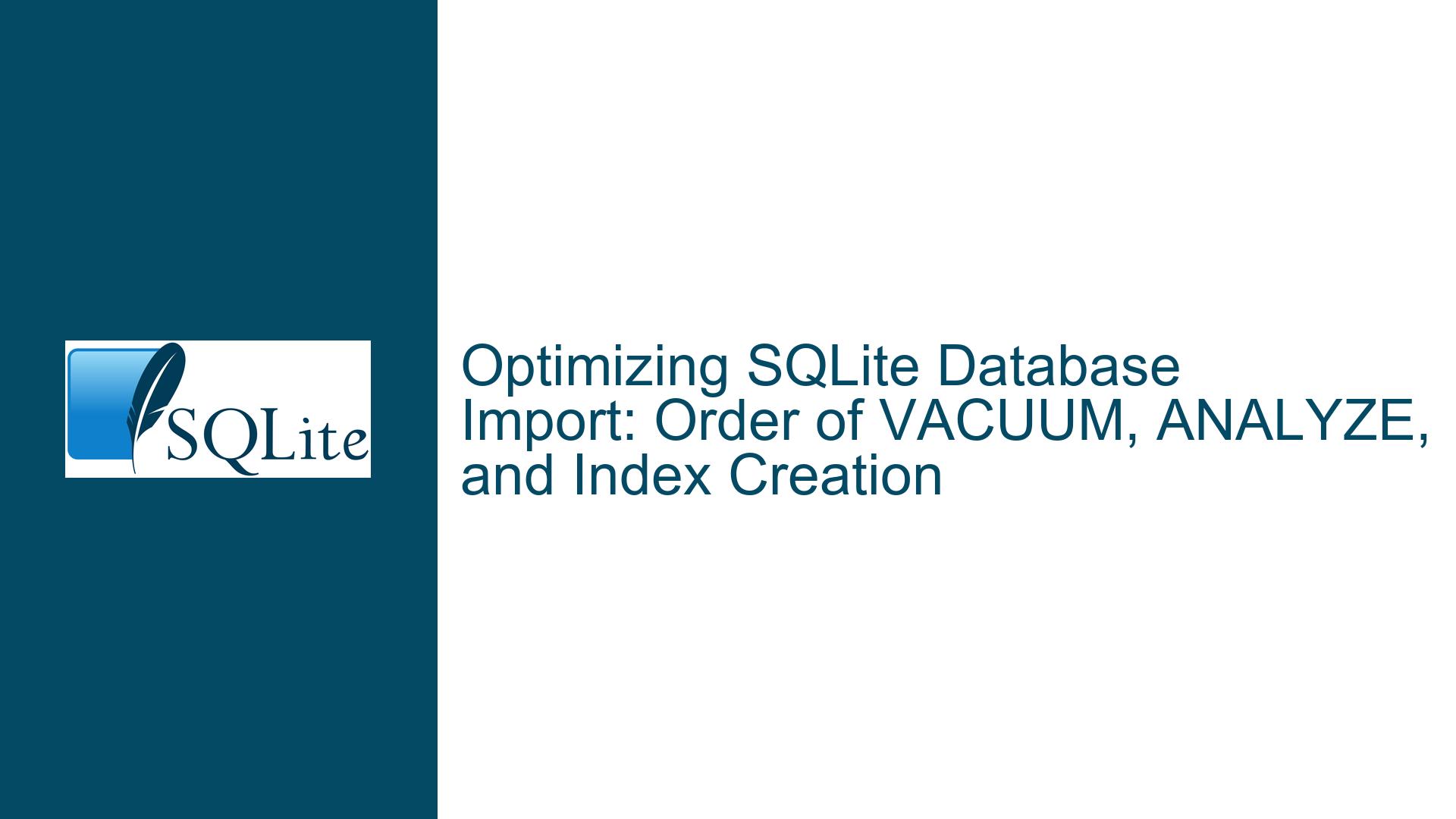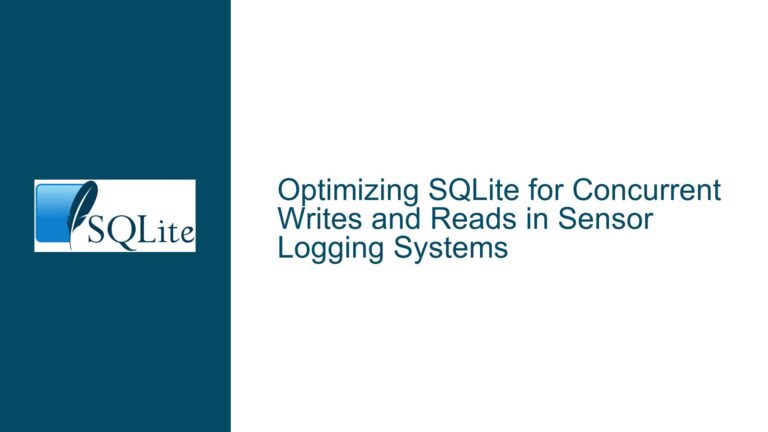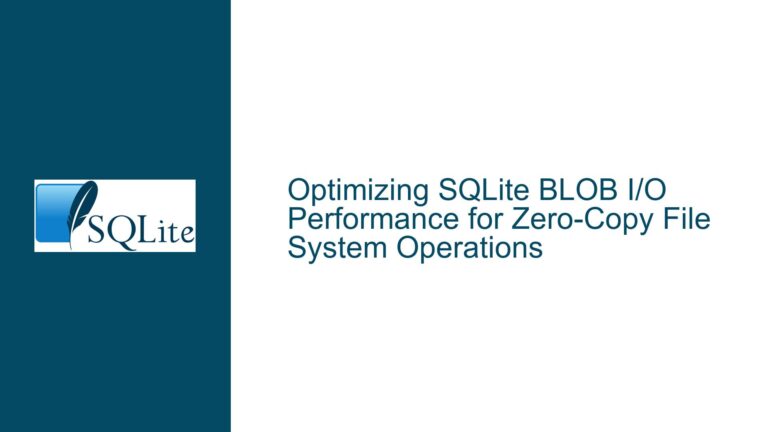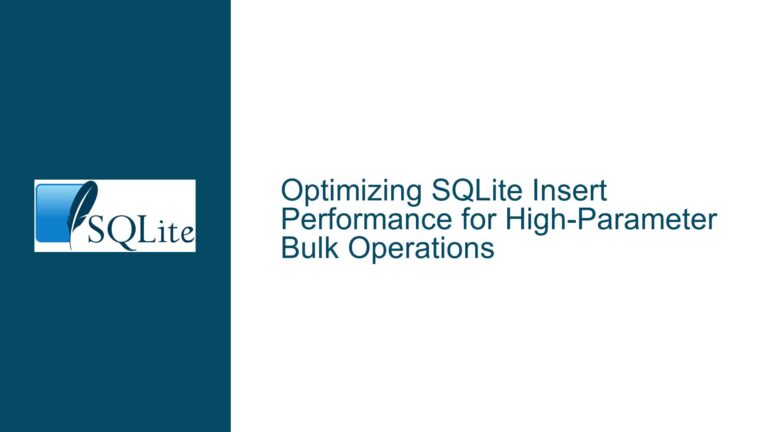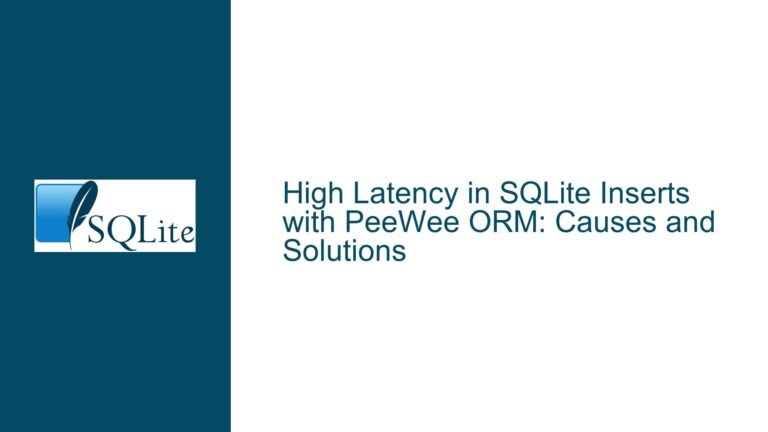Optimizing SQLite Database Import: Order of VACUUM, ANALYZE, and Index Creation
Large Data Import Performance and Fragmentation Concerns
When dealing with large-scale data imports into SQLite databases, particularly those involving millions of rows and gigabytes of data, the order in which operations like VACUUM, ANALYZE, and index creation are performed can significantly impact both the import performance and the subsequent read performance of the database. The primary concern revolves around minimizing fragmentation and ensuring that the database is optimized for read operations once it goes "online." This is especially critical when the database is serving data over a WebSocket using a custom protocol, where read performance is paramount.
The current approach involves creating tables, inserting data, creating indexes, committing the transaction, and then performing VACUUM and ANALYZE operations. While this sequence is generally sound, there are nuances that can be optimized further. For instance, the interleaved nature of inserts into multiple large tables can lead to fragmentation, which is why a VACUUM operation is performed post-commit. However, the timing of index creation relative to the VACUUM operation is a point of contention. Creating indexes before VACUUM might lead to fragmented indexes, whereas creating them after VACUUM could result in more compact and efficient index structures.
Additionally, the use of UNIQUE constraints during table creation can impact performance. While these constraints ensure data integrity, they can also introduce overhead during the insert phase. Removing these constraints and instead creating UNIQUE indexes post-insert can lead to performance gains. Furthermore, the idea of parallelizing inserts into separate database files and then merging them using a CTAS (Create Table As Select) operation is worth exploring. This approach could potentially reduce the need for a VACUUM operation, as the inserts would be non-interleaved and thus less prone to fragmentation.
Impact of UNIQUE Constraints and Index Creation Timing
One of the key considerations when optimizing the import process is the handling of UNIQUE constraints and the timing of index creation. UNIQUE constraints, while essential for maintaining data integrity, can introduce significant overhead during the insert phase. This is because each insert operation must check the constraint, which can slow down the overall import process. By removing these constraints from the table definitions and instead creating UNIQUE indexes after the data has been inserted, you can achieve a more efficient import process.
The timing of index creation relative to the VACUUM operation is another critical factor. Creating indexes before VACUUM can lead to fragmented indexes, as the underlying table data may not be optimally organized. On the other hand, creating indexes after VACUUM ensures that the table data is defragmented, leading to more compact and efficient index structures. This approach can save significant I/O operations, as the indexes will be built on a more organized dataset.
Another consideration is the use of PRIMARY KEY constraints. In many cases, PRIMARY KEYs are either INTEGER AUTOINCREMENT or implicit rowid, which cannot be externalized. However, for other unique constraints, converting them into CREATE UNIQUE INDEX statements that are executed after the data has been inserted can lead to performance improvements. This approach allows for a more streamlined insert process, as the constraints are not checked during each insert operation.
Parallel Inserts and CTAS for Defragmentation and Performance
The idea of parallelizing inserts into separate database files and then merging them using a CTAS operation is an intriguing approach to optimizing the import process. By inserting data into two separate database files in parallel, you can take advantage of multi-threading and potentially reduce the overall import time. This approach is particularly beneficial when dealing with large datasets, as it allows for non-interleaved inserts, which are less prone to fragmentation.
Once the data has been inserted into the separate database files, you can use a CTAS operation to merge the data into a single database. The question then arises as to whether the CTAS operation is optimized to perform page-level copies, which would result in a non-fragmented continuous span of pages for the copied table. If the CTAS operation can indeed perform page-level copies, this would eliminate the need for a VACUUM operation, as the data would already be defragmented.
However, it is important to consider the overhead associated with the CTAS operation. While it may offer benefits in terms of defragmentation, it also involves additional I/O operations, which could offset some of the performance gains. Therefore, it is essential to carefully evaluate the trade-offs and determine whether this approach is suitable for your specific use case.
In conclusion, optimizing the order of operations during a large-scale data import into SQLite involves careful consideration of several factors, including the handling of UNIQUE constraints, the timing of index creation, and the potential benefits of parallel inserts and CTAS operations. By carefully evaluating these factors and making informed decisions, you can achieve a more efficient import process and ensure that your database is optimized for read operations once it goes online.
